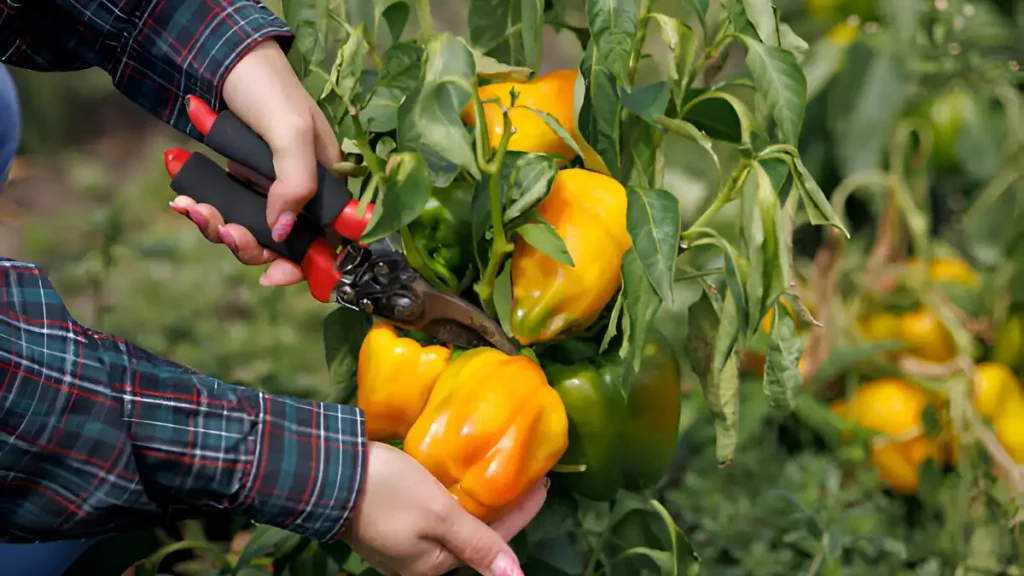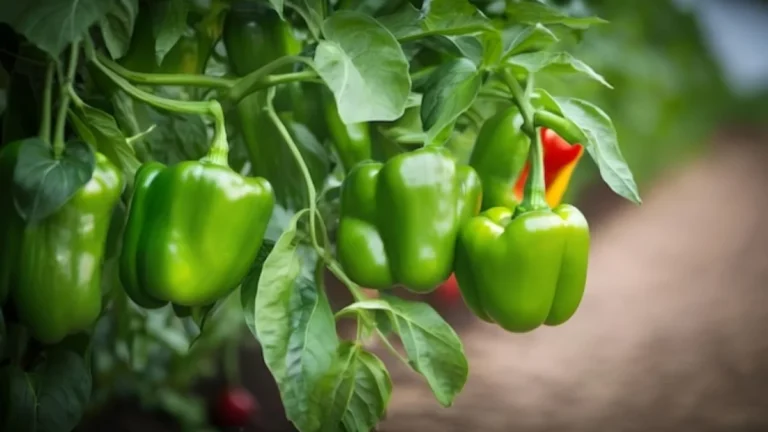Bell peppers are a great addition to any kitchen because they are nutrient-dense and deliciously colorful. Growing bell peppers vertically is a rewarding and space-efficient way to cultivate these vibrant and nutritious vegetables. Vertical gardening not only saves space but also allows for better air circulation and sunlight exposure, leading to healthier plants and a more bountiful harvest.
In this guide, we’ll go over all the important details of growing bell peppers vertically:
Choosing the Proper Varieties:
- Select bell pepper cultivars that are tiny or compact and can grow vertically. Mini Bell, Baby Belle, and Patio Bell variants are a few examples.
Preparing the containers for growing bell peppers:
- First, give the plastic containers a thorough cleaning and take off any labels. Using a clean edge, trim the bottle’s bottom with a sharp knife or pair of scissors.
- Cover any sharp edges left by the cut with masking tape. Next, drill four holes for the twine, similarly spaced, close to the cut edge.
Planting with soil for growing bell peppers:
- For container planting, use a potting mix that drains well and is high in nutrients.
- Plant bell pepper seeds or seedlings according to the recommended spacing on the seed packet.
- Make sure the containers you have selected receive enough sunlight for six to eight hours each day.
Assisting Systems:
- Install vertical support systems for your bell pepper plants, such as cages, trellises, or stakes.
- To avoid damaging the plants, use soft plant ties to attach them gently to the support structures as they grow.
- Since bell peppers grow best in bright light, hang your new bell pepper planters in a spot that receives lots of sunlight.

Fertilizing and Watering:
- Make sure the soil is constantly damp but not wet. Bell peppers like their soil to drain properly.
- Follow the directions on the container when applying a balanced fertilizer to your plants regularly growing bell peppers.
preparing and Pruning:
- To encourage the plant to first focus most of its energy on vegetative growth, pinch off the early blossoms.
- To encourage upward development, trim any side shoots or branches that develop between the main stem and the leaves.
Management of Insects and Diseases:
- Keep an eye out for common insects such as aphids and caterpillars. Use organic pest control methods or insecticidal soap if needed.
- To reduce the risk of fungal diseases, make sure there is adequate air circulation surrounding the plants.
Harvesting:
- When bell peppers get their optimal size and color, harvest them. Take care when cutting them off the plant so as not to cut the stems.
Why grow bell peppers vertically? because vertically growing bell peppers improves air circulation, increases yields, reduces pests, makes harvesting easier, and produces stronger plants with sufficient support. It decreases disease risk, boosts productivity, and minimizes soil contact, making it a healthier and more effective way to produce bell peppers.
Conclusion:
Growing bell peppers vertically is a promising cultivation method that addresses space limitations, promotes higher yields, and offers various other benefits. While considerations such as structural support and proper plant care are essential, the advantages of this approach make it a compelling option for both novice and experienced gardeners alike.
Certainly! If you’d like to learn more, please consider following our WhatsApp Channel, Facebook, Instagram, YouTube, Twitter, and Pinterest.
A frequently asked questions:
Q1: Why are bell peppers so hard to grow?
A1: Bell peppers can be difficult to cultivate since they are climate sensitive, needing warm days (70-85°F) and moderate nights (60-70°F) to flourish. They also have a lengthy growing season, require regular irrigation, and are susceptible to pests and illnesses, which can impede growth and fruit production.
Q2: Are bell peppers fruit or a vegetable?
A2: Bell peppers are botanically classified as fruits, although they are commonly used as vegetables in culinary contexts.
Q3: How do I prepare bell peppers for freezing?
A2: Wash the bell peppers thoroughly, remove seeds and membranes, then chop or slice them into desired sizes before freezing.
Q4: How much sunlight do need to growing bell peppers in pots?
A4: Bell peppers thrive in full sunlight. Provide at least 6-8 hours of direct sunlight daily for optimal growth.
Q5: How long does it take for bell peppers to fully grow?
A5: Bell peppers normally mature about 60 to 90 days after transplanting, depending on the type. Green peppers may be picked sooner, however colored peppers (red, yellow, or orange) require longer to completely mature.

